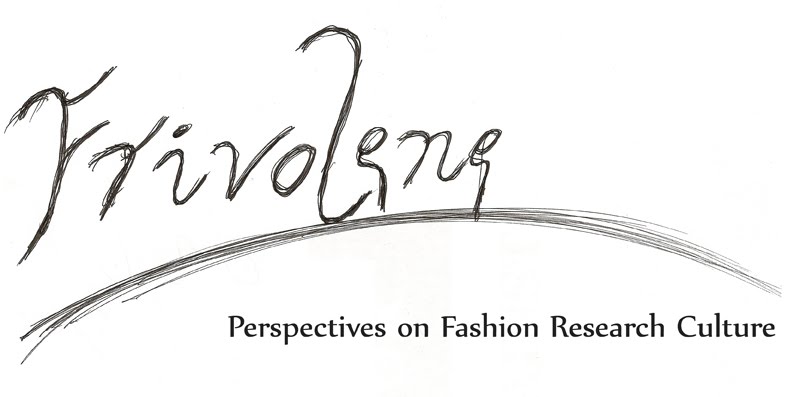


Last week some of the F&T research group made the return journey back to Blythe House, this time to view the exhibition The Concise Dictionary of Dress, curated by Judith Clark and Adam Phillips in collaboration with Artangel. For anyone who has not yet seen this intriguing exhibit, I am almost rather loathe to reveal too many details, for fear of spoiling what is probably the 'must-see' fashion exhibition of the year.
To give an overall impression, rather being located in a glossy, purpose-built set, as many of Clark's past exhibitions have been, the exhibits were instead located within the working archives of the V&A Museum, located at Blythe House. Visitors are not allowed to wander at will through the vast rooms and winding corridors, which to some may come as a relief, such is the labyrinthine quality of the building. As a fellow visitor remarked, you certainly have the sense that something awful could happen to you, for instance, if you were accidentally locked in for the night. Instead, we were guided through the exhibits on a structured tour of the building, being with a journey in a large goods lift up to the fourth floor of the building. Beginning on the roof, we were led through a variety of rooms, travelling up and down winding staircases, eventually finding ourselves outside in the courtyard where the old coal-bunkers were located.
What struck me most about this exhibition, was less about the actual artefacts that we were directed to look at, than the play on the ambiance of the building itself. Atmospherics were very much an important part of the overall 'feeling' and experience of this exhibition for the visitor. Often, in exhibition design the 'comfortableness' of the exhibition experience is often forgotten, particularly if anyone who has had to endure the heaving crowds of a busy 'blockbuster' exhibition on an otherwise relaxed Sunday afternoon will appreciate. Yet in The Concise Dictionary of Dress the visitor was exposed to a contradiction in the experience of this exhibition. On the one hand we were offered the privilege of being allowed to explore a building normally closed to the general public, with the added 'luxury' of being attended to by a personal guide. Yet at the same time, in being (gently) forced to move around the building to view the next exhibit, there was little time to linger or savour the exhibits as you might in a 'normal' (and uncrowded) exhibition space.
Judith Clark and Adam Philips are to give a talk in a couple of weeks at LCF, where Clark is head of the MA course for Fashion Curation, so am intrigued to attend that to hear more about their motivation and intent for this exhibition.












